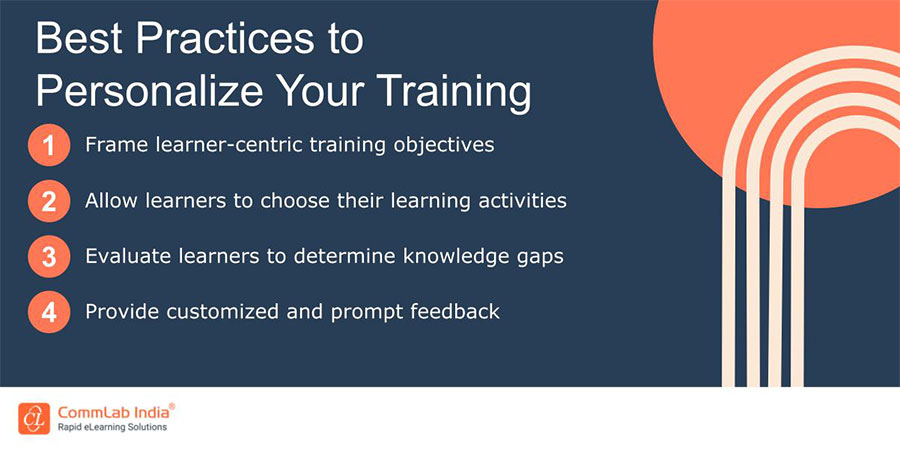7 Reasons to Use Scenario-Based Learning for Sales Training

Training a sales force is no simple task. Salespeople need in-depth product knowledge, sharp communication skills, and the ability to think on their feet. Traditional training methods often struggle to make knowledge "stick" and can't fully prepare reps for the unpredictable nature of real customer interactions. This is where scenario-based learning(Scenario-based learning) shines. It uses interactive, branching stories that mimic real-life sales situations, giving learners a "practice arena" to hone their skills. Let's dive into why it could be the key to unlocking your sales team's full potential.
Want to Ace Your Sales Training? Try Scenario-Based Learning!
Here are a few reasons to say yes -
- Promotes realistic practice
- Develops decision-making skills
- Offers personalized feedback
- Measurable and adaptable
7 Reasons to Use Scenario-Based Learning for Sales Training
1. Promotes Realistic Practice
Sales success depends on handling various interactions: product demonstrations, handling objections, closing deals, and more. Scenario-based learning creates simulated environments where reps encounter these scenarios in a way that feels true to life. The ability to practice these conversations, with realistic responses from virtual "customers," makes sales training far more impactful than simply reciting pitch points.
2. Develops Decision-Making Skills
The best salespeople don't just follow a script; they analyze situations and make informed decisions. Branching scenarios in Scenario-based learning force learners to do just that. They'll need to weigh a customer's needs, choose persuasive language, and respond to curveballs. The process develops the adaptive thinking vital for sales success.
→ Download eBook Now: Scenario-Based Learning
3. Provides a Safe Space for Mistakes
Fear of failure inhibits learning, and nowhere is this truer than in sales. Scenario-based learning creates a low-stakes environment where reps can experiment. If they make a bad call in a scenario, the only consequence is a lesson learned. It builds the confidence they need to perform without hesitation when a real opportunity is on the line.
4. Improves Knowledge Retention
We've all experienced death by PowerPoint in training sessions. Scenario-based learning flips this on its head. Active participation is far more effective for embedding information in long-term memory. When reps wrestle with challenges within a scenario, the knowledge they gain to overcome them is retained far better than passively absorbed facts.
5. Offers Personalized Feedback
One-size-fits-all feedback has limited value. Scenario-based learning, especially with advanced authoring tools, can change that. Scenarios can branch and provide feedback based on the choices a learner makes. This reveals specific strengths and weaknesses, enabling training that's precisely tailored to each rep's needs. Here are a few best practices to personalize your training.

6. Engaging and Motivating
Let's be honest – sales manuals aren't exactly page-turners. Scenario-based learning transforms training into something resembling a "choose your own adventure" game. Having agency in a scenario, and seeing their choices impact the outcome, is motivating for learners. Engaged reps are more likely to absorb lessons and push themselves to improve. Here are a few more tips to motivate your sales force.

7. Measurable and Adaptable
Good sales training isn't set-it-and-forget-it. Scenario-based learning can track learner choices and outcomes within scenarios. This data is invaluable. It pinpoints common knowledge gaps, reveals where reps get stuck, and identifies which sales strategies consistently succeed. Training content can then be iteratively revised to address those areas, leading to ever-improving results.
How to Put Scenario-Based Learning Into Action for Sales Training?
To really see the power of Scenario-based learning, let's look at a more fleshed-out example scenario suitable for sales training:
Scenario: Overcoming Cost Objections in a Software Demo
The Setup: A sales rep is demonstrating a project management software solution to a potential client. The prospect shows interest but expresses significant hesitation due to the price point.
The Challenge: The rep must uncover the true reason behind the objection and skillfully reframe the value proposition, avoiding premature discounts.
Scenario Branches
Branch A: Generic Pitch The rep regurgitates standard benefits of the software without addressing the cost concern directly.
Outcome: The prospect remains unconvinced. The feedback highlights that generic responses fail to address a prospect's specific pain points.
Branch B: Probing for Deeper Concerns The rep uses open-ended questions to determine if the objection is truly about budget, or if there's a misunderstanding of the software's ROI, or perhaps concerns about implementation costs.
Outcome: The prospect reveals the real objection (e.g., fear of poor user adoption). This feedback emphasizes the importance of active listening to tailor sales arguments.
Branch C: Premature Discounting: The rep, feeling pressured, immediately offers a price reduction.
Outcome: The deal may close, but at a lower profit margin, and it reinforces the idea that the initial price wasn't justified. Feedback stresses the importance of first demonstrating value.
Enhanced Feedback
The best Scenario-based learning scenarios offer more than just "correct/incorrect" feedback. Here's how you can make this example richer:
- Tie feedback to sales techniques (e.g., "This response demonstrates consultative selling by digging deeper...")
- Provide alternative responses the learner could have used.
- Offer statistics or case studies demonstrating why a particular approach has a higher success rate.
Important Note: Even well-made Scenario-based learning scenarios are just one tool. Successful implementation involves:
- Variety: Use scenarios to teach different sales stages (prospecting, closing, etc.).
- Debrief: Facilitate discussions around scenario outcomes, not just individual choices.
- Adaptation: Analyze data on learner choices to continuously refine your scenarios.
Watch this short video to understand the importance of scenario-based learning.
Wrapping Up!
Scenario-based learning offers a compelling solution to the challenges of sales training. It bridges the gap between theory and practice, hones key skills, builds confidence, and is incredibly adaptable. As a powerful tool for sales team development, it deserves a place in every modern sales training toolkit. If you want to learn more about scenario-based learning, here’s a free eBook for you, check it out now!




![4 Ways to Create Microlearning for your Sales Training [Infographic]](https://blog.commlabindia.com/hubfs/Imported_Blog_Media/microlearning-for-sales-training-infographic.png)
